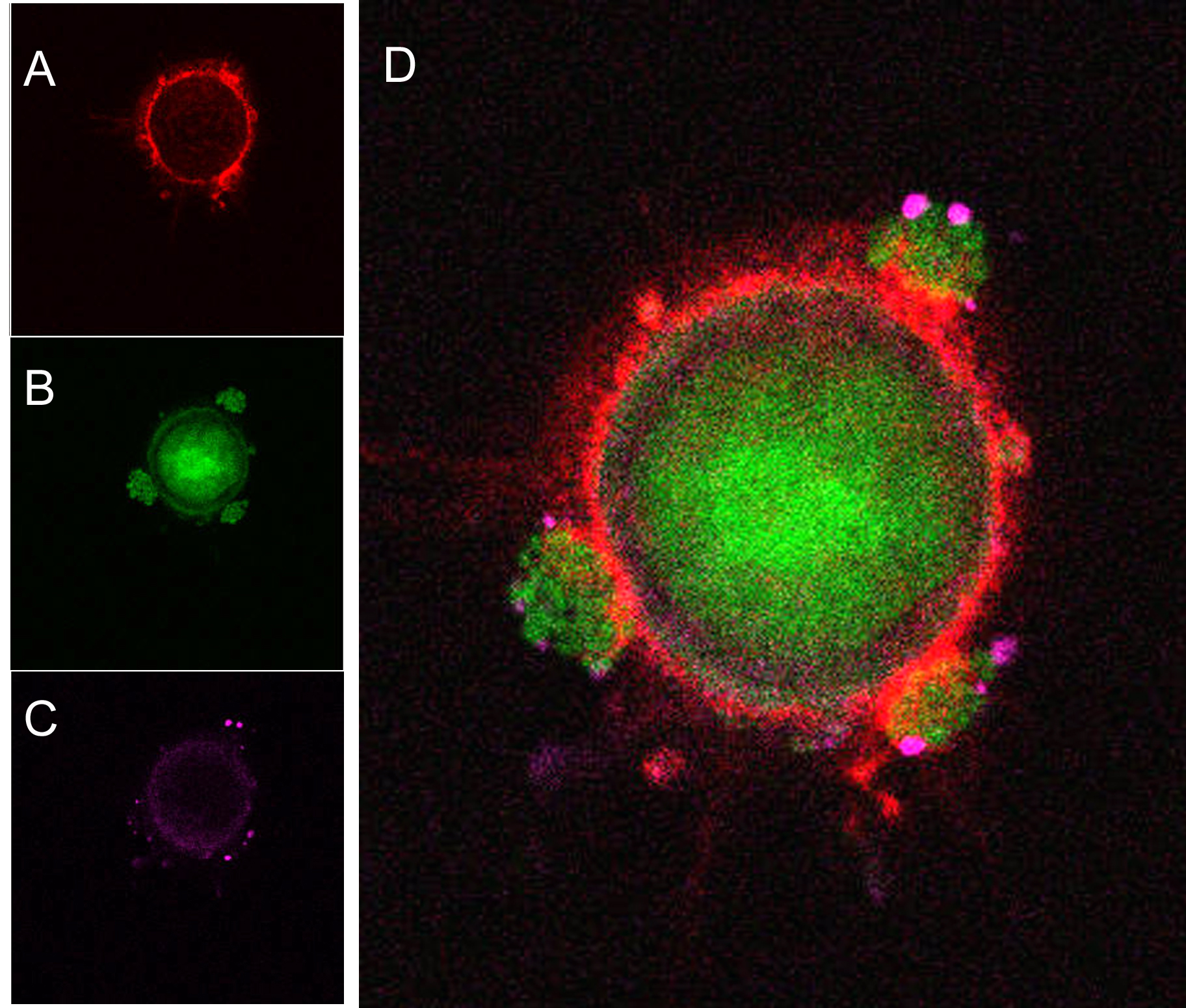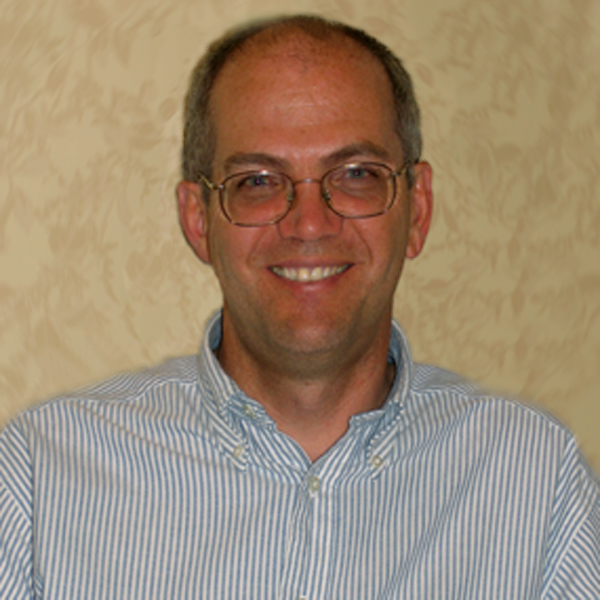|
Dr. Stein's Research Program: I chose to study Lipooligosaccharide (LOS) biosynthesis in Neisseria gonorrhoeae because little was known about this surface antigen. When I entered the field, knowledge of this molecule was limited to compositional analysis. In analyzing the data, I concluded that this molecule was significantly different from enteric LPS. Since this molecule is a major component of the outer membrane of Gram-negative bacteria, I thought that the chemical differences reported by others might be related to the disease-causing capacity of the organism. Early on, I learned that the reason little was known about gonococcal LOS was that none of the technologies/methodologies that were needed to unravel how the gonococcus synthesizes LOS were available.I spent the first part of my career at Maryland developing the technologies needed to study the genetics of LOS biosynthesis. I attempted to understand the biochemical basis for the inability to introduce recombinant plasmids from Escherichia coli into the gonococcus. Since it was reported that the gonococcus could make three different restriction enzymes, I thought that the presence of these host mediated restriction/modification (RM) systems might be preventing the incorporation of foreign DNA by the gonococcus. In collaboration with Bob Yuan and Andrzej Piekarowicz, we mapped out a strategy that would allow us to characterize the various RM systems of the gonococcus. When we began this work, few people had been successful in cloning RM systems, and little was known about the systems present in the gonococcus. In order to clone gonococcal RM systems using available technologies, we needed a ready source of the restriction enzyme under study in order to identify recombinant plasmids that encoded them. This presented a problem because the enzymes produced by the gonococcus were not commercially available. We developed a novel technology that allowed us not only to identify clones expressing the known systems, but also to identify 12 new RM systems. As an outgrowth of this work we received a patent for this technology. Several of the clones that were generated expressed novel specificities. The University has licensed several of these clones to various biotechnology companies. In characterizing the various RM systems as they relate to gonococcal biology, we were able to show that these enzymes can prevent the gonococcus from acquiring DNA from the environment. My first efforts at developing a cloning system in the gonococcus focused on trying to identify cloned genes via complementation of well defined E. coli mutants. I constructed a shuttle vector that allowed me to clone and express genes in E. coli, and then introduce these cloned genes into the gonococcus. This shuttle vector, and subsequent constructs are the only vectors currently used for cloning and expressing genes in the gonococcus. In developing the methodology needed to introduce genes into the gonococcus via conjugation and transformation, members of my laboratory cloned and characterized most of the RM systems found in the gonococcus, made mutants of these genes, and introduced these deletions into the chromosome of the gonococcus. This RM deficient strain has made genetic manipulation in the gonococcus much easier, as this strain lacks a restriction barrier. As a first step in identifying gonococcal genes that might be involved in LOS biosynthesis, I designed a set of experiments that demonstrated that gonococcal genes could be expressed in E. coli. This was done by interspecific complementation of well defined E. coli mutants. These advances allowed me to conclude that one could identify certain types of genes directly in E. coli. After establishing the methodology needed to introduce cloned genes into the gonococcus, I began to address the question, how does the gonococcus make LOS? I demonstrated that LOS biosynthetic genes could be identified via transformation. This was not a simple task as the transformation frequencies that I could obtain for modifying LOS expression in the gonococcus was lower than the spontaneous antigenic variation rates seen for LOS expression. However, the plate transformation procedure that I devised allowed me to overcome this problem. These studies suggested that LOS biosynthetic genes might be found in operons. My initial attempts at cloning LOS biosynthetic genes were hampered by the lack of suitable strains. However, I was able to take advantage of strains developed by others in the field. I generated a gene bank from strain FA19, and isolated a clone that could complement a pyocin resistant mutant, FA5100. Subsequent work has shown that this gene, lsi-1, is a homolog of (rfaF). This discovery allowed me to construct strains with a defined LOS structure. This strain has been used by others to begin to decipher the biological functions of LOS. The technologies I generated allowed me and many others in the field to clone most of the other genes involved in the biosynthesis of this complicated macromolecule. We have cloned all of the genes needed to add the various sugars onto known LOS structures. In addition, my laboratory has identified heretofore unknown structures by isolating variants that express alternate LOS structures. These strains will prove to be very important in unraveling the biology of LOS in gonococcal and meningococcal disease. As my work on LOS biosynthesis progressed, researchers in this field changed their view of the importance of this molecule in disease. Early work on the biology of LOS done in the mid to late 1980's showed that this molecule was able to undergo antigenic variation. Furthermore, others in the field showed that these molecules are absolutely required for disease, and that the bulk of the pathogenic response to gonococcal infections is due to damage caused/induced by LOS. I have recently described at the molecular level how the gonococcus regulates one type of LOS antigenic variation. We have developed a testable model that will demonstrate that antigenic variation in LOS expression is required for disease. The gonococcus is also able to simultaneously express multiple LOS structures. The ability to express different structures on the same cell seems to be an important intermediate in the disease process. I have just submitted for publication data describing how the gonococcus regulates this simultaneous expression of multiple LOS structures. As I increased my knowledge of gonococcal biology, and efforts to develop a vaccine against infections with this organism, I realized that the gonococcus was a relatively benign immunogen. I thought that it might be possible to develop a novel approach toward vaccine development by incorporating foreign antigens into the gonococcus. I have shown that it is possible to express outer membrane proteins from Borrelia burgdorferi, Streptococcus pneumoniae, and Haemophilus influenzae in the gonococcus and use these recombinant strains to generate protective immune responses against challenge with the homologous organisms. With my colleagues at MedImmune, Inc., we have shown that recombinant Blebs expressing ospA from B. burgdorferi, pspA from S. pneumoniae, and the P6 protein from H. influenzae all produce protective immune responses. In the future, I see my research program changing to reflect advances in the field and a broadening of my scientific interests. I expect my current research program on gonococcal LOS biosynthesis to expand in two ways: 1) to include studying how this process occurs in the nonpathogenic Neisseria; and 2) to begin to develop models to study the immunology of this molecule. These studies will be important because the LOS structures that we see in laboratory grown gonococci only represent a subset of what is seen in vivo. We have a significant amount of data that indicates that genetic exchange between the gonococcus and the nonpathogens occurs in vivo, and if we are to truly understand the gonococcus's ability to make LOS, we need to know what structures are possible. If antibodies directed against LOS are to be effective in preventing disease, we need to understand the immunology of these molecules. I also plan to expand my research program on gonococcal RM systems to begin to ask questions about DNA repair in the Neisseria. Since methylcytosine is highly mutagenic, one would predict that because this organisms has so many DNA methylases, the gonococcus should be hypermutable. However, this organism is in fact hypomutable. This suggests that the gonococcus must be extremely efficient in DNA repair. Very little is known about how this organism repairs DNA damage. This type of study should be able to attract funding from a variety of sources. |
||||
| :: 1109 Microbiology Bldg. College Park, MD 20742. For more contact details, please see our contacts page |

